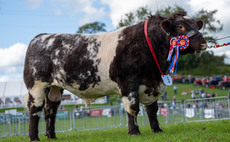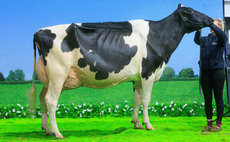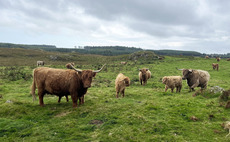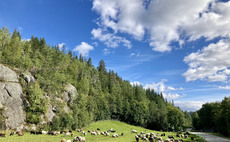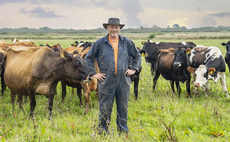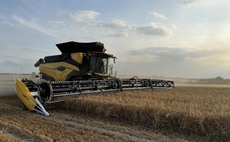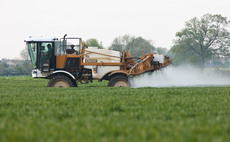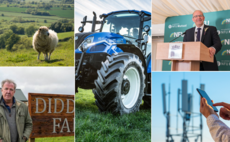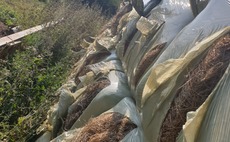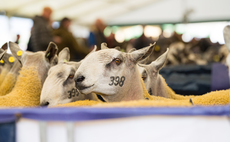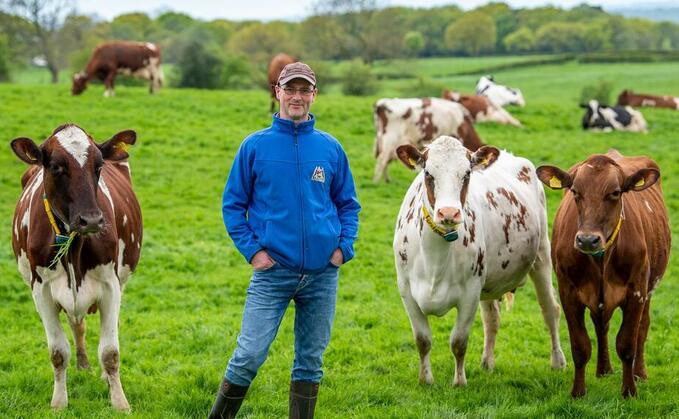
THE Ayrshire breed is seeing a surge in popularity and provides the perfect balance between production and longevity in the Jamara herd. Hannah Noble reports.
Nestled in the hills above Mellor, Blackburn, the views from Bolton Fold Farm stretch as far as Blackpool on a clear day and the gently sloping fields are home to the Jamara herd of pedigree Ayrshires owned by James and Sara Seedall.
When Mr Seedall entered into a partnership with his uncle, Raymond in 2004 the farm ran about 80 commercial Holstein cows. But identifying the need to expand in order to support both families, the herd has since grown and the milking herd now comprises 130 cows.
Having previously worked as a herdsman at Pemberton's Dairies, Lytham St Annes, Mr Seedall developed a fondness for Ayrshires and when the time came to expand the herd, they bought-in 11 in-calf Ayrshire cows from the Horton Lodge herd in Shropshire.
He says: "The Ayrshire is a breed which fits in to every system whether that is organic, grazing, in an intensive housed environment or on robots.
"I think people are coming back to Ayrshires because they want the hardiness, the longevity and the fertility - everything the breed offers."
In 2011, Mr Seedall took over the tenancy from his uncle and now farms in partnership with his wife.
As well working part-time at The Veterinary Health Centre, Lytham St Annes, Mrs Seedall, who is a mixed practice vet by trade also carries out the routine cattle work on-farm.
Over the years the Ayrshire bloodlines continued to take hold and outnumbered the Holsteins. This is when the decision was made to register the pedigree Ayrshires under the Jamara prefix which Mr Seedall says came from a contraction of James and Sara.
The Ayrshire performs well on the family's part-grazing, part-housed system. With a frequent cold wind off the Irish Sea and heavy clay land, the cows must be hardy and able to graze in all conditions which is where Mr Seedall says Ayrshires fit the bill.
He says: "The Ayrshire is a slightly smaller and hardier cow than the Holstein, they milk well but look after themselves a bit better and retain more condition.
Buffer
"We try and paddock graze the cows for about six months of the year from the end of April until October, along with a bit of buffer feed and concentrates in the parlour."
The cows are grazed in 1.21 hectare (three-acre) paddocks and moved every 24 hours across the 20.2ha (50-acre) grazing platform until gradually more grass becomes available after each cut of silage is taken. Mr Seedall says he cuts 36.4ha (90 acres) for first cut silage, 28ha (70 acres) for second cut and 20ha (50 acres) for third cut with the aim of clamping between 1,200 and 1,500 tonnes of grass.
The average production of the herd is 8,500 litres on twice-a-day milking with a current daily milk yield of 32 litres at 4.2 per cent fat and 3.3 per cent protein. The milk is sold to Yew Tree Dairy on a liquid contract.
Mr Seedall runs the farm predominantly as a one-man band, with the help of a relief milker four mornings a week. Sons, George, 12, and William, 10, take it in turns to feed the calves.
The cows are calved all year round although Mr Seedall says there is a skew with the most cows calving between Christmas and turnout at the end of April. Heat detection is carried out both visually and using activity monitors. The voluntary waiting period is 42 days and he aims to have all cows in-calf by 100 days in milk.
He says: "Ayrshire cows are generally good at showing heats and getting in-calf, we are not having to regularly intervene or synchronise them."
Mr Seedall says good fertility is one of the reasons the majority of their cows remain in the herd for six or seven lactations, with many reaching lifetime yields of more than 60t.
He says: "With Sara carrying out our routine vet work, we invested in our own scanning machine which we use to pregnancy diagnose the cows every two weeks and it paid for itself within the first few months."
Genetics are extremely important to Mr Seedall and he keeps a close eye on the best sires available to use on the herd. Some of the bulls currently being used are Ardmore Jeepers Creepers, Hilltown Oblique, Ravenhill Victory and Biddesden Hector.
He says: "One of the problems I have found going into a minority breed is finding new bloodlines and getting different bulls. But part of the Ayrshire Cattle Society's role is to source new families and help maintain the breed."
When selecting bulls, Mr Seedall places a heavy emphasis on profitable lifetime index and milk solids and chooses cows to breed replacements from according to their production and longevity within his herd.
He says good locomotion and udders tends to be a given with the Ayrshires, and he culls heavily on foot and leg problems, as he says cows must be able to graze well and walk to and from the parlour.
Although genomic testing has proved a revolutionary breeding tool in some dairy breeds, genomic data gathered from breeds which are tested in smaller numbers can be less reliable. Because of this the society is encouraging its members to test their animals and help to build the database, increasing the reliability of the data.
The family is currently awaiting genomic results from a bull they have bred in the hope the society will market its genetics, making it their second bull in stud.
Jamara Heather Honey's Hercules was their first. It joined the Genus stud in 2017 and now has daughters milking across the UK and even in South Africa.
Rearer
The herd's youngstock are contract reared by D. and C. Parkinson, Wrea Green, Kirkham, which is about 20 miles from the farm. The heifers head to the rearer once weaned and return about a month before calving, which is on average at 24 months old. All the heifers housed with the rearer are inseminated with Aberdeen-Angus semen which Mr Seedall says keeps things simple and also provides a cash crop of beef calves.
"We use the Aberdeen-Angus for ease of calving and we get some really good prices for our Angus cross calves, heifers average £170-200," he says.
They also use some Charolais semen on the cows and all the beef cross calves are sold through North West Auctions, Lancaster. Mr Seedall says Charolais bull calves regularly make £400.
Away from the farm, Mr Seedall is an active member of the Ayrshire Cattle Society committee and has been on the NFU dairy board for the last three years. He was also the chair of the North West Ayrshire Breeders' Club from 2017 to 2019.
Along with George and William the Seedalls usually enter two or three local shows each year in particular Great Harwood, Great Eccleston and Hodder Valley.
"We did not register the herd with the intention of showing but it is a great way to get the kids involved with the cows, and it is something we do together as a family. We have been showing since William was just three years old," says Mr Seedall.
As well as gracing the local show circuit, they occasionally travel further afield to larger shows such as the UK Dairy Expo, Carlisle. In 2019 they entered the EX90 classified, Jamara Nickle Gladys into the Ayrshire classes at Dairy Day held in Telford and performed well in a large class of 11 animals.
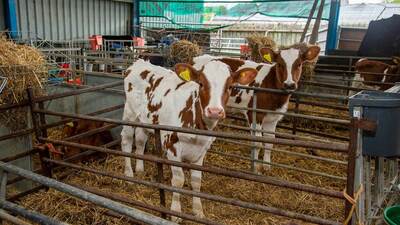
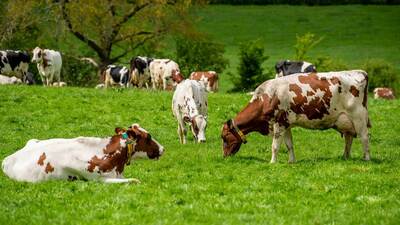
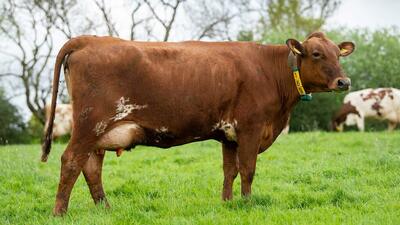
Farm facts
- The farmland is predominantly heavy clay
- Bolton Fold Farm is 60 hectares (148 acres)
- The farm is part of the bovine viral diarrhoea check scheme and carries out Johne's monitoring with Beacon Farm Vets, Garstang.
- The cows are milked twice-a-day through an eight-year-old 14:14 Westfalia parlour.
- The herd runs at a 22 per cent replacement rate
- The herd has a calving interval of 380 days and 50 per cent of the cows hold in-calf to the first service
- The Seedalls have bred many of their own bulls including Jamara Rockstar Not Given, Jamara Trust Woolly and Jamara Nickle Lockdown.
- The winter ration is formulated by Lune and Fylde Ãļ§Ö±²¥ and contains grass silage, fodder beet and a blend from Dugdale Nutrition.
- Cows are fed to yield in the parlour






